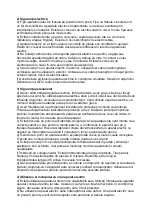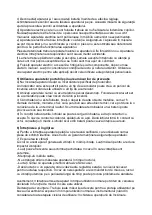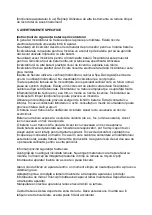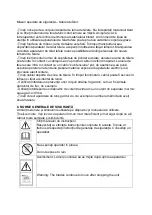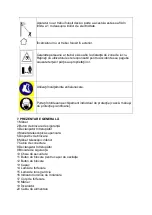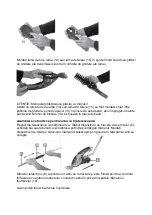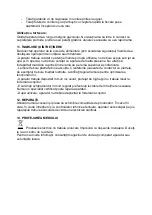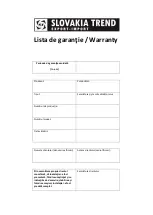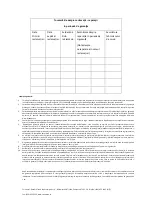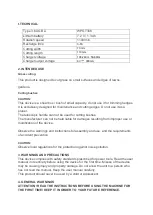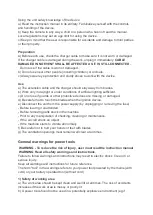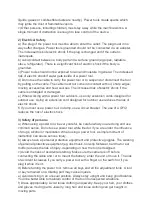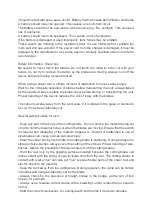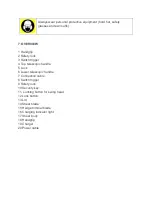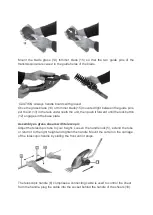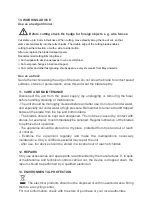
g) If the tool is designed to connect an extraction and dust collection, ensure that the
device is connected and properly used. The use of a dust extraction device can limit
the risks associated with dust.
4) Use and handling of the power tool
a) Avoid using the device beyond its capabilities. Always use the tool specifically
designed for the job. The tool will perform a better job with more security if used at
the rate for which it was designed
b) Do not use a power tool if the switch is defective. A power tool that can be turned
on and turned off by the switch is dangerous and must be repaired.
c) Unplug the unit and / or remove the battery before making any adjustments,
changing accessories, or to land the aircraft. This security measure helps prevent
accidental starting of the unit.
d) Power tools are not used must be out of reach of children. Do not allow the unit to
an inexperienced or have not read the manual. Power tools are dangerous in the
hands of inexperienced people.
e) Power tools must be carefully maintained. Make sure the moving parts can move
freely and are not blocked and that no parts are broken or damaged to the point of
disturbing the operation of the tool.
Damaged parts must be repaired before the tool is used again. Poorly maintained
power tools are the cause of many accidents.
f) The blades should be kept clean and sharp. Blades sharpened carefully maintained
and are less likely to bind and are easier to control.
g) Use the power tool, accessories, fittings and other parts as shown in the manual.
Consider the working conditions and the nature of the job. The use of a power tool for
applications other than those specified is potentially dangerous.
5) Use tools running on batteries and precautions for use
a) Do not charge with the charger specified by the manufacturer.
A charger that is suitable for one type of battery pack may create a fire hazard when
used with another type of battery pack.
b) Use tools only with specifically designated battery packs. The use of any other
battery pack may create a risk of injury and fire.
c) When battery pack is not used, keep it away from other metal objects, such as
paper clips, coins, keys, nails, screws or other small objects that can lead to a
connection from one terminal to another. The short-circuiting the terminals of a
battery together may cause burns or fire.
d) In bad conditions, the liquid may be ejected from the battery, avoid contact. In
case of accidental contact, flush with water. If the liquid comes into contact with eyes,
seek more medical attention. The liquid ejected from batteries can cause irritation or
burns.
6) Maintenance and care
Summary of Contents for WPGT306
Page 1: ......

